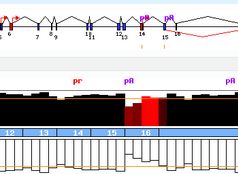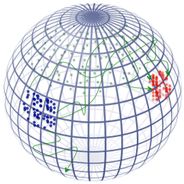Welcome to Didier Auboeuf et Olivier Gandrillon teams !
 The team of Didier Auboeuf is interested in the regulation of alternative splicing, the main process allowing to largely increase the functional diversity of proteins coded by a limited number of genes in higher organisms. The team has contributed to demonstrate that during tumor progression, massive variations of gene expression occur, not only at the transcriptional level but also in the nature of the different transcripts that are generated from the same gene by alternative splicing.
The team of Didier Auboeuf is interested in the regulation of alternative splicing, the main process allowing to largely increase the functional diversity of proteins coded by a limited number of genes in higher organisms. The team has contributed to demonstrate that during tumor progression, massive variations of gene expression occur, not only at the transcriptional level but also in the nature of the different transcripts that are generated from the same gene by alternative splicing.
Thanks to complementary approaches in bioinformatics and in molecular and cellular biology, the main objectives of the team are to identify the molecular mechanisms responsible of those splicing alterations in cancer, and to better understand how those alterations contribute to the phenotypic plasticity of tumoral cells.

The molecular mechanisms controlling decision making at the cellular level between self-renewal and differentiation are still poorly understood. The central question of the group of Olivier Gandrillon consists in understanding the molecular mechanisms controlling self-renewal and the alteration of these mechanisms in relation to the onset of cancer. For this we abide by the following view : "The stem-cell signature should therefore be determined by systems-biology tools that can identify patterns, rather than by the analysis of individual genes or even multiple gene-product behaviours." Zipori, D. (2004) The nature of stem cells : state rather than entity. Nat. Rev. Genet., 5, 873-878. This question is tackled through three projects :
- SinCity: Single Cell investigation by transcriptomics analysis;
- DRACULA : Modeling normal and pathological hematopoiesis;
- Deciphering nuclear receptor biological function in differentiating mouse pluripotent embryonic cells.
